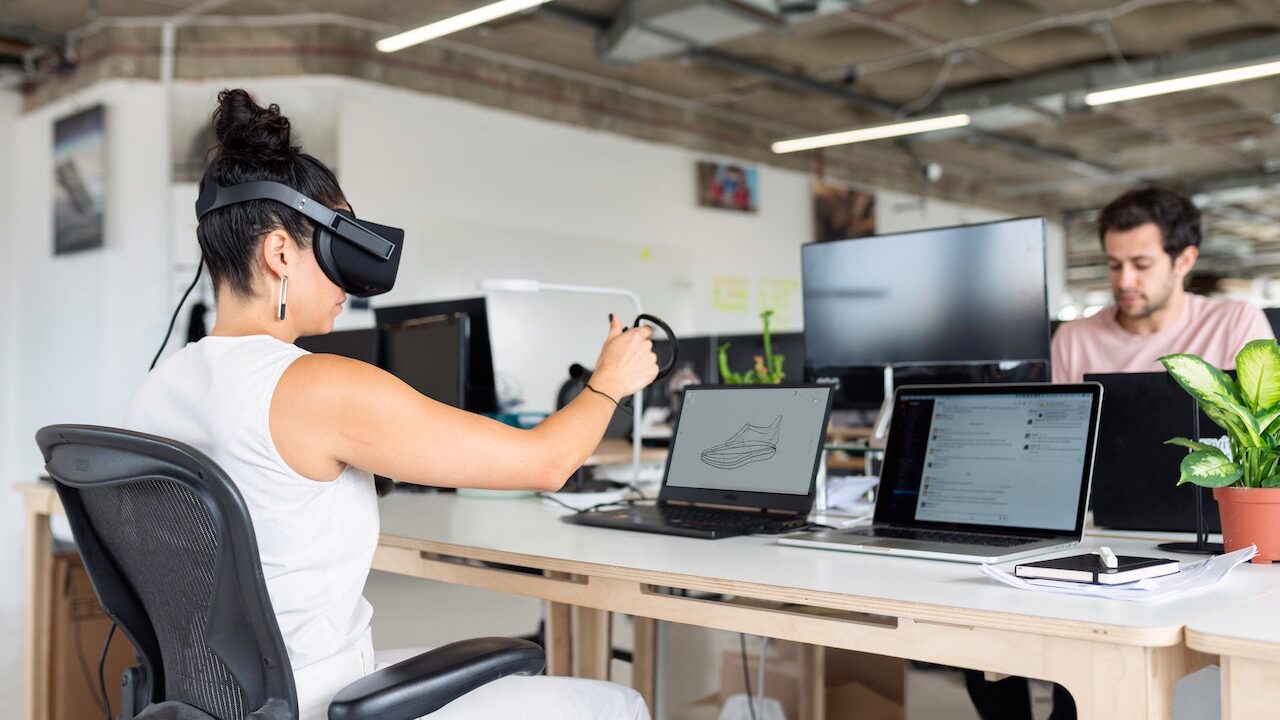
For a long time, the concept of Augmented and Virtual Reality has been the talk of the town. It’s incredible that people still believe in fairy tale stories in which the pictures are absolutely fantastical. As a result, in order to help businesses work effectively, it is critical to educate people about these technologies and their applications in our daily lives.
The two conceptions are nearly identical, but they serve two distinct purposes. Both of these technologies are frequently included in a single section. These technologies have a lot in common, which just adds to your current reality. Simultaneously, it has little effect, and the difference is correct whether your perspective shifts.
Consider this: in VR, you can swim among sharks in deep oceans, however with AR, you can only watch sharks performing duties depending on the driving instructor’s virtual business card. Companies must understand which technologies can be used in certain segments.
Virtual Reality (VR)
There are numerous VR technological gadgets available, like the Oculus Rift, Google Cardboard, and Samsung Gear VR. Using these VR glasses, you can enter the place or room where the game is being played and fully escape the real world.
Most VR games are designed to increase the user experience, but users can also advance to the top of the game. Several gamers mentioned that they do not enjoy being suffocated, thus they like that space provides freedom and that they may travel anywhere without wearing virtual glasses.
Outside of the game, it is only fiction that diminishes the features of virtual reality. Will it be worthwhile to travel? For example, how would VR benefit us in the future if we wear such virtual reality glasses and traverse the streets of New York or see the thousands-year-old pyramid? The question is valid, but they can only see it wearing glasses
Virtual Reality’s Future (AR stands for Augmented Reality)
Indifference, AR (Augmented Reality), works in the same place, but the main element and present are missing, therefore it is projected into the same space. If a development business is working on a similar project and collaborating with an Industry 4.0 company.
Thanks to advancements in technology and the use of advanced glasses, the production department of a certain time has hundreds of users who are interested in and can integrate into the system that can demonstrate.
IKEA already offers several AR benefits in everyday life. They create applications that present your chosen furniture in the location where you want it to fit (you may verify whether the furniture fits properly or not).
All you have to do is point the camera where the furniture is located, and the app will reveal if the furniture will fit in that location or not, allowing you to virtually locate the furniture).
Another example of AR is Pepsin Company, which launched an incredible campaign to introduce Zero, in which the company impressed its users with the help of VR technology. Augmented reality has misled consumers so many times that they have forgotten the distinction between virtual and reality.
Furthermore, Microsoft HoloLens is based on augmented reality rather than virtual reality. It displays VR information and visuals as holograms into space and visible items. It is an extremely useful card for displaying a property that is still under construction or when constructing a home.
But, if we go back a few years, I’m sure you recall the 2016 AR craze that caused a lot of trouble on the streets, or almost everywhere. It is due to Pokémon Go.
The game has grown in popularity and continues to surprise people in fresh ways. With the game displaying Pokémon figurines via the camera on the cell phone, it is a wonderful combination of the actual and virtual worlds.
So there is a distinction between virtual reality and augmented reality. On the same page, we state that we are not discussing future aspects of these technologies, but rather the present. Both are regarded as excellent opportunities for the advancement of research, healthcare, and a person’s educational and everyday life.
If you have any questions about this issue, please contact us by filling out the contact form. Our team of developers will give you the finest solutions for your firm.
Wrapping Up
Augmented and virtual reality are fast changing how we interact, learn, and experience our surroundings. These game-changing technologies have already had a tremendous influence across multiple industries, and their future potential is enormous. As we push the limits of what is feasible, the notions of AR and VR will grow and reshape our understanding of reality. The future is exciting, and we’re only scratching the surface of the great possibilities that AR and VR provide.








